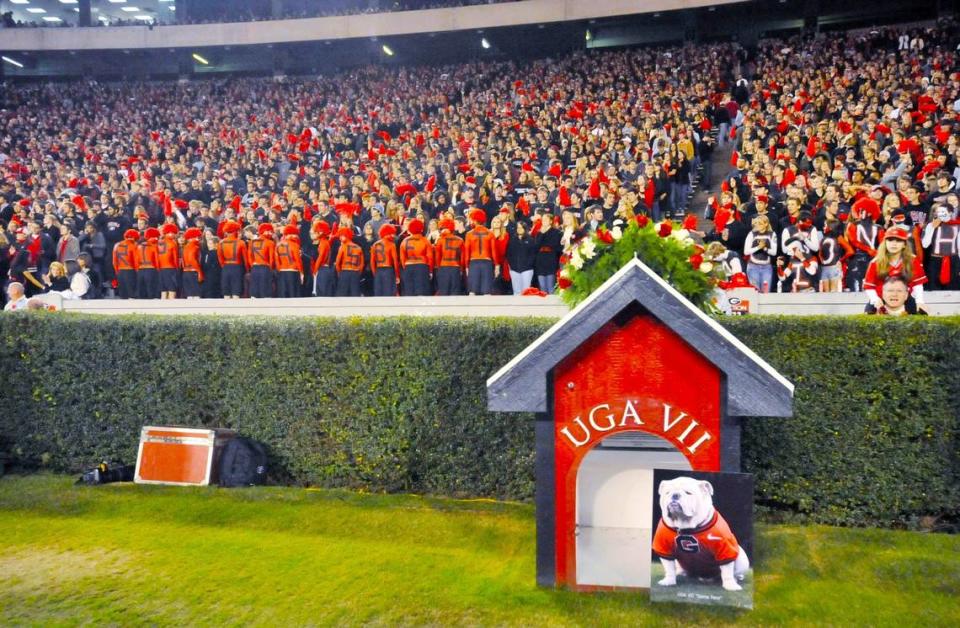Understanding Uga Mania: Why all the fuss over a dog? (Because this mascot’s a Dawg)
Editor’s Note: In the wake of the death this week of Sonny Seiler, the patriarch of the University of Georgia’s “Uga” Bulldog mascot tradition, we share a version of a 2008 article from Telegraph archives about the mystique surrounding the state’s most famous dog.
An opening scene in movie director Clint Eastwood’s 1997 rendering of “Midnight in the Garden of Good and Evil” revolves around actor Kevin Spacey, portraying antiques dealer and Gordon native Jim Williams, doing his best to explain to an outsider the popularity of a certain English bulldog.
The dog, owned by a Savannah family, and its bloodline had long been symbolic of the University of Georgia and, most prominently, its football team.
While taking the dog for a stroll through Savannah’s Forsyth Park, the Williams character, talking to a reporter played by John Cusack, says, “No matter what you and I ever do in our lives ... neither of us will ever be as famous as Uga.”
And Uga has achieved that rarest breed of fame. Not only do folks know who he is. They love him, too. They hug him. They pet him. They want their pictures taken with him. They’ve even been known to let him lick their newborn children.
The longest line at the University of Georgia football team’s picture day is always the one with a droop-cheeked English bulldog waiting and doing anything but grinning at the end.
So why is a paunch-faced pooch so revered?
“How do I know what makes him famous?” Uga’s master, Savannah lawyer Sonny Seiler, said by phone recently. “I really don’t promote him. I just try to keep him out of the way of people who might want to commercialize him.”
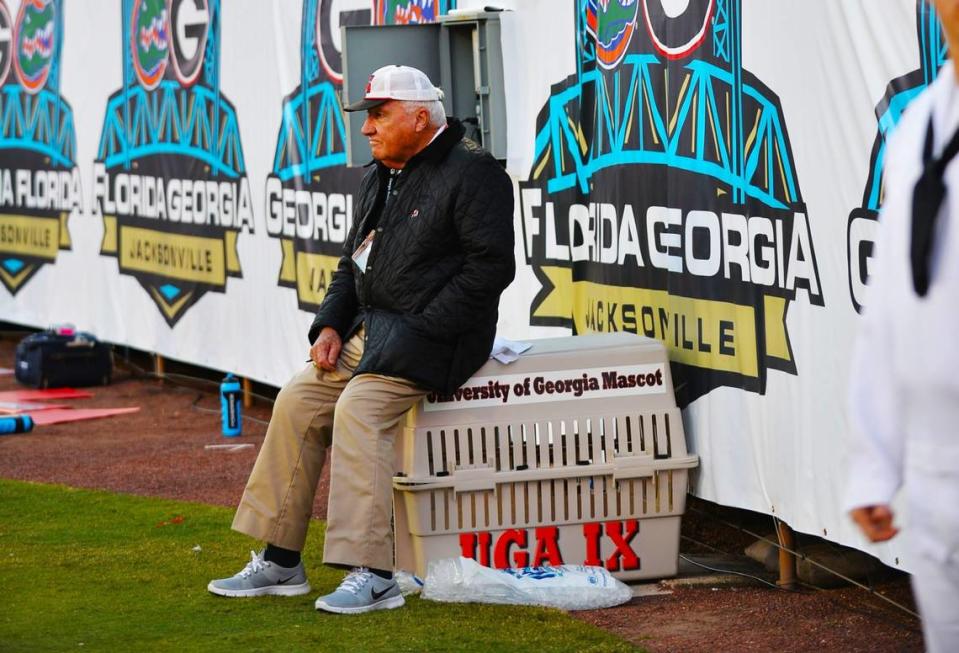
Part rock star, part ambassador
Cultural scholars have tried to explain the fascination with college football, especially the sport’s rabid followers in the South.
The scholars have noted how local allegiances to certain schools’ football teams may be rooted in the American Civil War, a parochial us-versus-them blend of love, hate and perceived social-class standing. And such disagreeable sides always have their battle flags, their insignias. It so happens that since the 1950s, the University of Georgia’s has been a pup named Uga.
The dog has become an ambassador on a leash. The college’s legions of alums and scores of otherwise unassociated fans who root, cheer and go woof-woof-woof for its teams for no other reason than the fact that they are the home team, view Uga as, well, Bulldog Nation in fur. He is a rock star and national treasure, a pudgy cartoon character of a living, barking being.
People love dogs as it is. But when you’ve got one, a chosen one no less, who waddles the sidelines in the colors of a school that so many support, then the adoration transcends the mere notion that a dog is man’s best friend. That dog becomes a deity, one that during the past quarter century arguably has been on TV more than Snoopy.
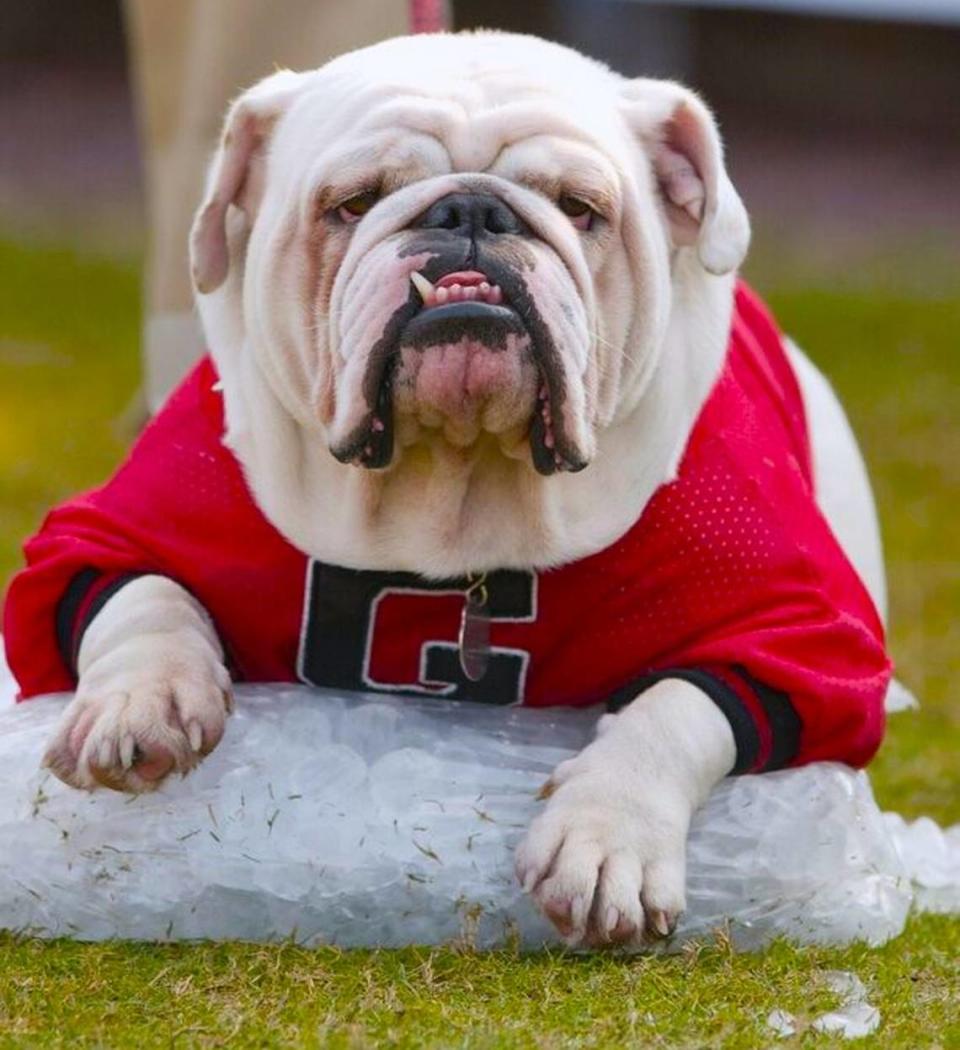
Uga has become Georgia’s everydog, a pug-nosed, red-collar worker with a “G” on his jersey and jowls floppier than a basset’s ears. He ain’t pretty. Think keg with legs. Still, the denizens can relate. If they could, they’d buy him a beer.
Seiler, whose family owns the line of Ugas and will this weekend unveil Uga VII, makes it a point not to overexpose the mascot or let it get “commercial and tacky.”
He said that if Uga were “just a dog on a string, what would we have? Nothing.”
Though Seiler didn’t elaborate, he believes the rise in popularity of football on television during the past three decades may have bolstered Uga’s Q rating. Consider that with an hour of live action in a three-hour game telecast, two hours of fill time tend to include countless shots of Uga on the prowl, mugging it up.
In the prologue of the Uga-chronicling 2002 book “Damn Good Dogs,” which he co-authored, former Sports Illustrated reporter Kent Hannon writes:
“America always has a favorite animal. With the exception of Secretariat and an animated mouse named Mickey, it’s usually a dog. In years gone by, Rin Tin Tin was king of the canines, then Lassie. But ever since Sports Illustrated put his ‘Churchillian physiognomy’ on the cover of the magazine in 1997 and proclaimed him the nation’s No. 1 mascot, the entire country — and, at times, the entire planet — has been ga-ga over Uga.”
Dogs sleep at the foot of people’s beds. In some cases, on their beds, even in their beds. Try sharing a duvet with Mike the Tiger from LSU.
Or take Bevo, the steer and mascot of the University of Texas. Things with horns aren’t all that huggable. Even so, folks embrace animal mascots more than they do inanimate ones such as Trojans, Commodores or Buckeyes.
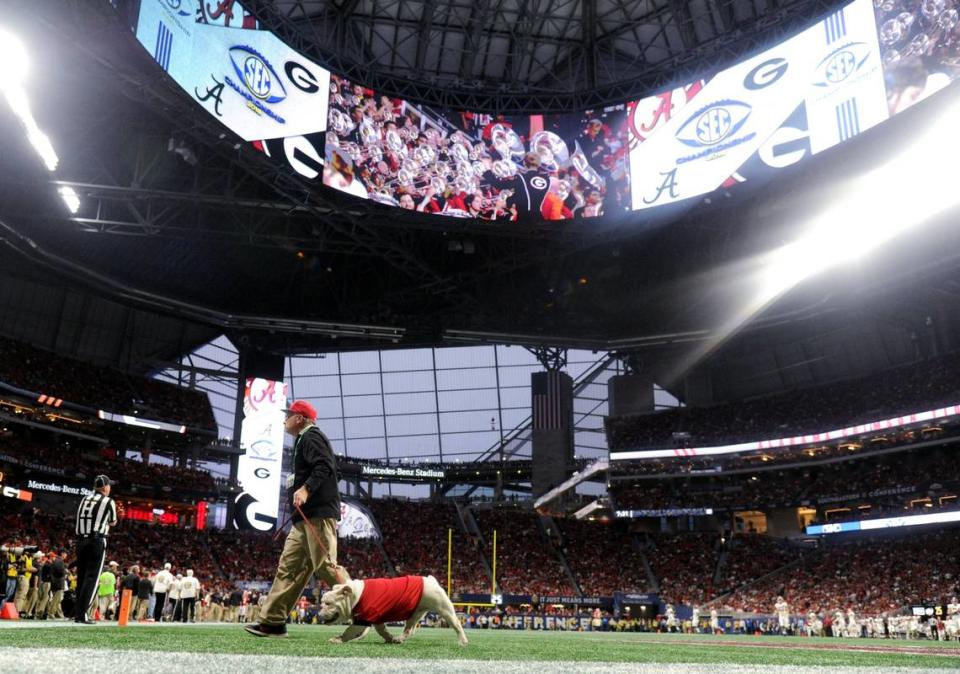
The star of a ‘dogumentary’
After Uga VI died in late June, UGA president Michael Adams, speaking at a private funeral service for the dog at Sanford Stadium, was quoted as saying, “There are probably some who think it odd to pay this much attention to an animal, a puppy, a dog. I would suggest to you that Uga is a very powerful symbol.”
When you think about it, Uga is probably more recognizable to outsiders as a Georgia emblem than the state’s flag is.
In 2005, in a video “dogumentary” of the Uga line titled “Damn Good Dog,” the school president said Uga’s celebrity had achieved mythical status.
“Sort of like Santa Claus and the Easter Bunny,” Adams said. “He’s always here. He’s a presence. He’s continuity. You know you’re going to see him every year. And I think he just sort of has become a part of the culture of UGA.”
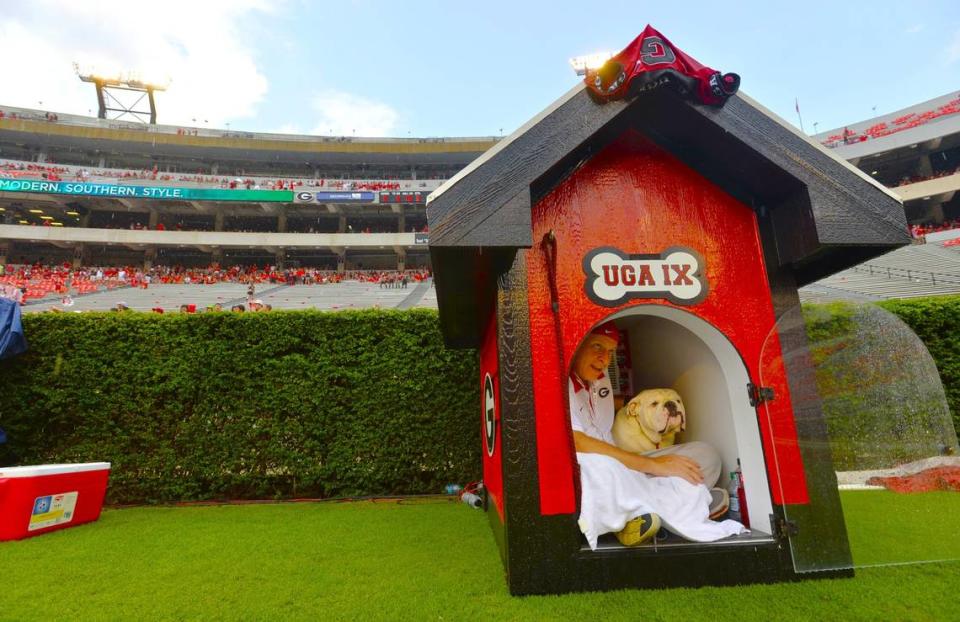
Uga V’s 1997 appearance as a coverboy for Sports Illustrated served as a national coming out for Georgia’s top Dawg.
In the “Damn Good Dog” video, Hannon, who co-authored the Uga book, recalled how a senior editor at the magazine had told him how it was that Uga V came to be on the magazine’s cover as the nation’s “No. 1 Mascot.”
Hannon said the editor mentioned how “Uga had that sort of classic, old-school look that we kind of wanted.”
“And in about an hour,” Hannon said, “he’d shown it around to enough editors ... and they said, ‘Uga’s the cover.’ “
The discovery of Uga
Several people in Georgia have had a hand in making Uga the household hound he has become. But none perhaps, in the very beginning at least, as much as Dan Magill.
It was Magill, a pioneer of sports publicity and a longtime tennis coach at the university, who “discovered” the original Uga in 1956.
Up to then there had been no official bulldog mascot. Magill said fans with bulldogs “just showed up and they’d let them on the sidelines.”
In the early-to-mid 1950s, a brindle bulldog named Mike became a regular at sporting events.
He lived on the second floor of a campus fieldhouse. Magill let two of his tennis players live there for free so long as they “looked after the bulldog.”

But Mike died before the football season in ‘56. Georgia coach Wally Butts asked Magill to find a replacement.
Magill thought of Seiler, a former swimmer and law student who at the time was working in the school’s ticket office.
Magill said, “Sonny told me that his wife had a little baby English puppy whose grandfather was the Georgia mascot at the Rose Bowl game on New Year’s Day of ‘43. I looked at the dog and he looked good to me. I told that to coach Butts and I said, ‘You want to go over and see him?’ He says, ‘I ain’t got time, but if he was the grandson of our Rose Bowl mascot then sign him up.’ “
Today that heritage, that four-legged legacy, looms large as ever.
Sure, unseasoned sportscasters occasionally mispronounce his name and call him “Oooga.” (For the record, it’s “Uh-guh.”)
And, yeah, people who aren’t from around here still don’t quite get it when they see some dog being fawned over at ballgames and treated like royalty when he dies.
But the reason really is as simple as this: He’s a Georgia boy.
He’s one of us.
And he is a direct descendant of the glories of Saturdays past.
He is tradition incarnate.
“That’s the reason they like it,” Magill said. “Everybody just loves that dog.”
